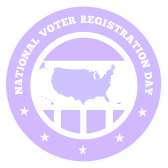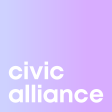Here’s What The Change-Makers Of 2016 Have Done With All That Big Activist Energy
The need for change hasn’t gone away. But the tactics are different.
It will come to be known as the election that changed everything. Donald Trump, 2016 — in a matter of moments, the swift end to a political innocence gave way to the beginnings of a revolution, one fueled by shock, fear, and outrage. While many Americans had long fought against the systemic inequity in our country, for others, the nation they had thought they knew — one that recognized justice and decency — seemed to have vanished.
An urgent wave of demonstrations flooded the streets with a raw energy and demand for change that hadn't been seen since the 1960s. More than 5 million people turned out for the nationwide Women’s Marches in 2017 — the largest single-day protest in U.S. history — crowds stormed the airports protecting immigrants, and people called their senators, canvassed for candidates, and fundraised for communities threatened by the impending administration. Many citizens, probably people you know, who had never made a protest sign before joined activists on weekends, lunch breaks, whenever they could, all in the effort to resist.
AdvertisementADVERTISEMENT
Three years later, that visceral energy hasn’t waned, but it has changed form. The activists who dedicated themselves to protesting in 2016 have since turned their focus to more targeted forms of action. The women we spoke with, who have launched or joined political organizations since Trump’s election, are using quieter tactics to achieve the progress they wish to see in this country, including fundraising, educating public officials, and signing up new voters. They are making change behind the scenes, rather than on the streets. But when it comes to resisting an administration that is diametrically opposed to the values of many Americans, it's that quiet, constant daily work that often has the most impact.
The 2016 election made many women, especially privileged ones who had previously barely waded into politics, wake up and realize they needed to participate if they wanted change. They formed thousands of mostly informal groups, some of which are still thriving and some of which have quietly petered out, from crafting clubs that support progressive causes, to pockets of friends who meet once a month to "postcard," which had suddenly become a verb, to digital activist circles that connect through newsletters, zines, and, of course, Twitter. Yes, there were thousands of activists already doing the work who didn't need Trump to realize America is a bundle of systemic issues that will need decades to untangle. But the newly energized political activists, stumbling into consciousness in the early days with their safety pins and pink hats, were about to start the journey for themselves.
AdvertisementADVERTISEMENT
Women of all ages and political persuasions, but particularly millennials and women of color, have become more politically engaged since 2016, according to research by the nonprofit Barbara Lee Family Foundation conducted for a project on gender dynamics in the 2020 election. Almost one-third of women (29%) reported increased involvement, as well as 41% of millennials, 36% of women of color, and 35% of Democrats. We spoke with several of them to determine how they went from reacting to the urge to do something, anything, post-Trump to the quieter, more strategic efforts they're making now.
After Trump's win, the first thing actress Erin Darke did was email all of her friends and invite them to a consciousness-raising meeting in her Manhattan apartment. The group spent its first session — and its second one — crying and talking about how scared they were of what was coming next. Then, they made a list of issues they cared about, everything from climate change to immigration, and decided they were going to do their part in the emerging resistance by holding fundraisers for deserving, but under-funded, organizations. The group called itself Women to the Front (WTTF, an apropos acronym).
Erin Darke.
Darke played Cindy Reston on the lamentably short-lived Good Girls Revolt, a show about women in the '60s fighting for equal rights in the newsroom, and says the show was "almost entirely" the inspiration for the initial meeting being a consciousness-raising session. Consciousness-raising, a political organizing tool used in the women's liberation and civil rights movements of the '60s as a way of examining existing power structures, first seemed anachronistic in a room of women raised on promises that they could do anything men could — and the certainty that Hillary Clinton would be president. A month before, Audrey Gelman and Lauren Kassan, two women around Darke's age, had founded the women-only coworking and networking space the Wing, a much more probable meeting spot for city-dwelling 21st-century women with means. But now, they were afraid they had backpedaled into an era when their rights were less secure. At the same time, they craved the space and ability to talk out what on earth had just happened.
AdvertisementADVERTISEMENT
"I found myself on set, when we would shoot the scenes with the consciousness-raising meetings, realizing that my generation of women didn't really do that, and that was really sad," Darke tells Refinery29. "I like to think that one of the tiny silver linings that has come out of the shitshow of the last few years is that I've seen more women be supportive of each other and seeing that it's not all feast or famine."
WTTF quickly went from consciousness-raising to targeted fundraising. WTTF's first event — a party with DJs, cocktails, and tacos at Brooklyn's Union Pool in July 2017 — raised $15,000 for the only remaining abortion clinic in Kentucky. They then held a comedy night to raise money for immigrant and refugee rights featuring Sasheer Zamata, formerly of Saturday Night Live. "It's joyful activism," says Kate Dearing, who cofounded the organization along with Darke and actress Samantha Sherman.
Over its three years of existence, WTTF has raised about $66,000 for various organizations, with a membership of around 100, 40 of them particularly active, largely of creative professionals in New York City. Its next fundraiser is for New Florida Majority, which works to expand democratic rights for marginalized people in Florida, a swing state that's notorious for voting-related scandals.
Amy Bettys, co-chair of Women's Health and Reproductive Rights (WHARR), says her organization went through a similar journey to WTTF, its actions moving from protesting to educating local officials over the years. WHARR is a grassroots group in Brooklyn founded about a week after the 2016 election that works primarily on reproductive rights-related legislation and elections at the state level. Bettys, too, has noticed the change in women's political involvement. "I would say that there's not as much energy out in the streets," she tells Refinery29. "But our activism has become more strategic and sophisticated. Yes, there has been some burnout, but we look at ourselves as a choir. While some are singing their lungs out, others need to take a breath. It's an ebb and flow." Currently, WHARR is working with local and state officials in New York state to bring awareness to "fake clinics," or crisis pregnancy centers (CPCs), which have sprung up all over masquerading as legitimate medical facilities but push an anti-abortion agenda.
AdvertisementADVERTISEMENT
A key trend among activist groups since 2016 has been establishing political offshoots (labeled 501c4, rather than 501c3, for tax purposes) of their groups, which has freed them up to lobby for candidates. “You can’t do anything that’s partisan in a generic nonprofit organization,” Kandice Harris, the Midwestern regional director of Run for Something, an organization dedicated to supporting and recruiting candidates running for “down-ballot” races (and a 501c4), tells Refinery29. “I definitely see throughout the Midwest groups becoming more political. … You can build capacity by building awareness, but to get things done you have to have some kind of voice within your legislative process.” This is also why, she says, she’s seen a lot of former political organizers run for local office.
One thing such targeted activism does that protests don’t always do is help lift up the voices of marginalized people. Manasa Karthikeyan, 19, leads the graphics and social media for the George Washington University chapter of The Sunrise Movement, a national organization of youth to stop climate change that launched in April 2017. Although she has attended numerous marches, she says that she’s realized it’s her everyday work, like the campaign urging GWU to divest from the fossil fuel industry, that truly makes a difference in communities.
“In the years since the election, I have realized that large-scale protests have their place and impact, but it’s often...grassroots efforts where everyone is taking action, and doing more than showing up one day out of the year for a protest, [that are] much more affecting,” Karthikeyan tells Refinery29. “In emphasizing individual people power, I think activism is able to move away from drawing in crowds due to celebrity presence, instead putting marginalized stories at the forefront.” Turning activism more localized allows more people to get involved, she argues.
AdvertisementADVERTISEMENT
Another factor that allows more people, particularly women and women of color, to get involved, is having the time to participate in political action, something that can feel like a luxury for those who work long hours or live far away from organizational hubs. After all, women told the Barbara Lee Foundation that their biggest barrier to political participation is, "I'm too busy working and/or taking care of my family." That's why it's important not to overlook the ways in which these nascent groups have made activism more accessible for all of their members.
Catherine Almonte, the managing director of The Broad Room, an NYC-based "activist training camp" for women and non-binary people that started after the 2016 election, says certain efforts to retain members have helped her group recruit more women of color. "We've shifted our gears toward building up our members in their professional and personal lives," Almonte tells Refinery29. "A lot of it is noticing who isn't coming to our trainings and why," whether it's because they're stuck at work until 8 p.m. or live in the Bronx when the training is in Brooklyn. "That's also why we've been doing events like 'mommy and me' canvassing, so people can bring their kids — it's a pretty effective canvass when you have a cute 5-year-old with you, too."
As a result of a more engaged electorate, experts are predicting the highest voter turnout of the century in 2020. Ashley Spillane, founder and president of social impact strategy group Impactual and former president of Rock the Vote, says she believes 2016's "big activist energy" will contribute to turning out the youth vote. "I see the tactics and the ways in which people are engaging changing," she tells Refinery29. "You still see turnouts at town halls being really significant when the members [of Congress] go home. When there is something contentious being debated in Congress, the phone lines are flooding. Trump's rallies are still very well-attended. Especially considering how far out we still are from the election, it has been an impressive amount of attention."
AdvertisementADVERTISEMENT
Of course, it's difficult for activists who want to beat Trump to keep up enthusiasm with the deck often stacked against them. These days, Democrats often describe themselves as meandering in and out of hopelessness, temporary high of the midterms aside, disappointed over and over again but knowing that giving up would mean giving in. There is a persistent vibe in the air that well-meaning, left-leaning people have become jaded from three years of Trump, with scandal after scandal leaving the psyche numbed, but ever-more-brittle. No wonder research suggests that Trump has been detrimental to many Americans' mental health, with clinical psychologists going so far as to pinpoint a distinct phenomenon called "Trump Anxiety Disorder." It's not a polite topic to mention around hardworking, idealistic activists and organizers, but some people are treating four more years of Trump as a depressing inevitability.
Backroom conversations aside, those who started the fight in late 2016 and early 2017 are going to keep fighting. "Most people I know are in an eternal loop of losing hope and then finding that one thing that gives them optimism," Darke says. "It's been a long three years. I haven't seen anyone lose hope entirely, but I've seen a lot of people, including myself, have really bad moments. But then, you get a little spark and are lifted out of it again."
And if it seems like some of the political fervor has died down, it's only because the biggest showdown is yet to come. "A lot of people are saving their energy for the latter half of this year," Darke says. "There's a difference between becoming jaded and realizing you need to rest for the upcoming battle."
Note: Julie Alvin, SVP of editorial strategy at Refinery29, is a member of Women to the Front.
AdvertisementADVERTISEMENT












